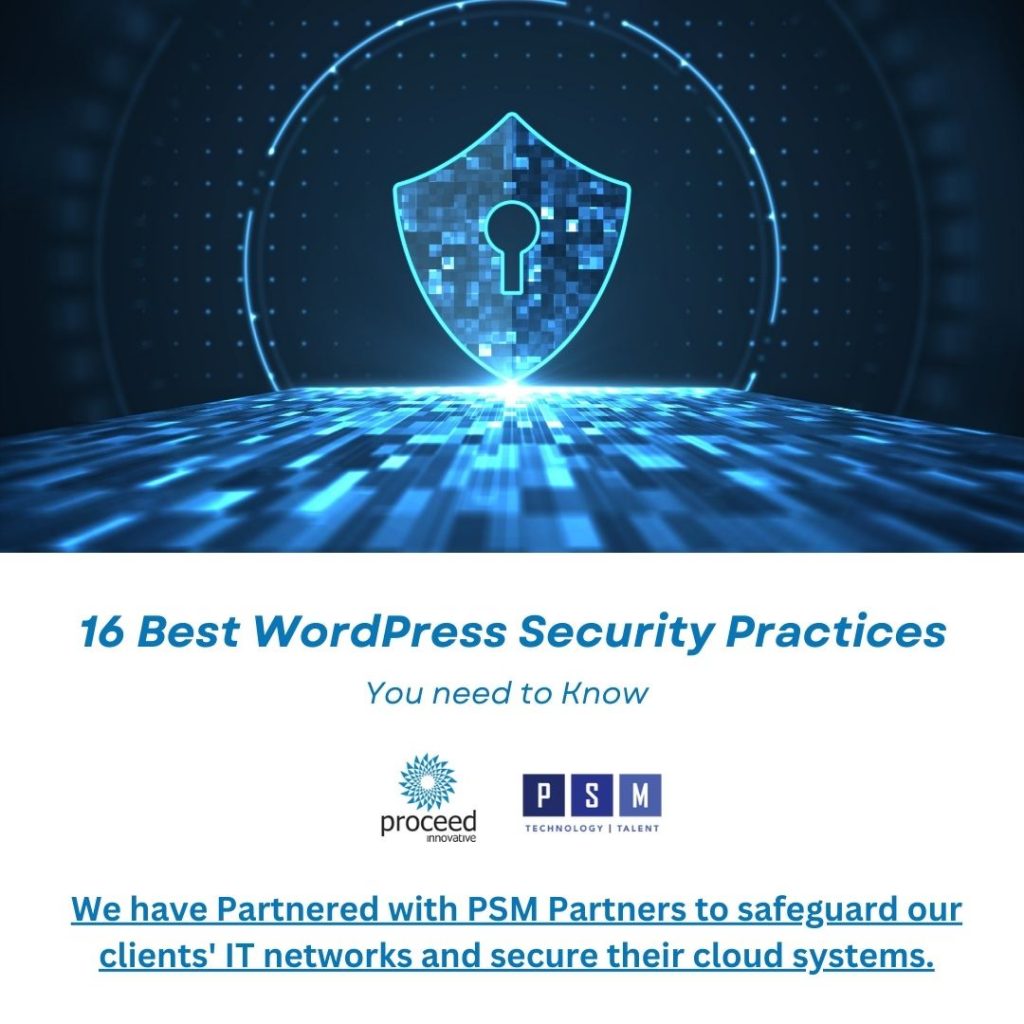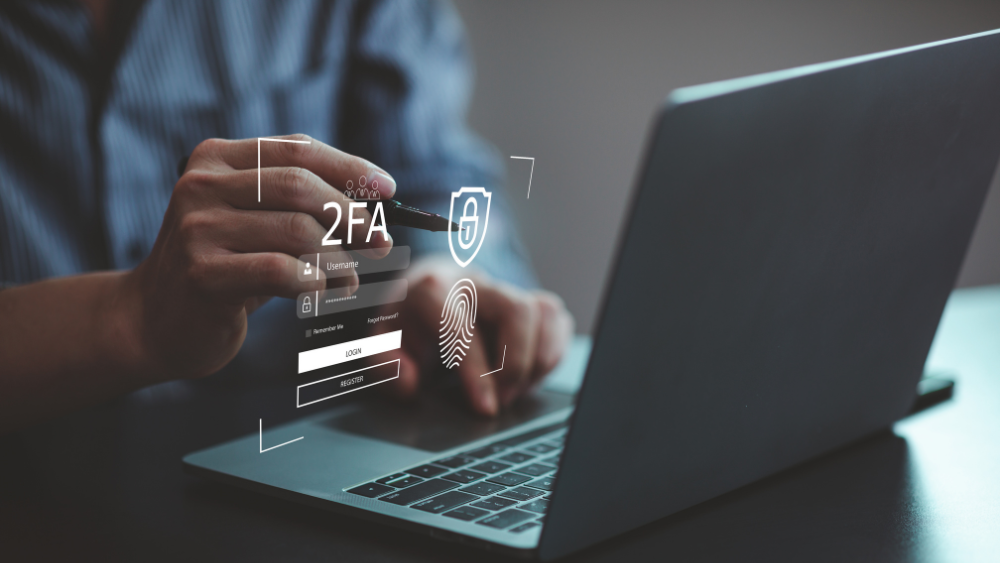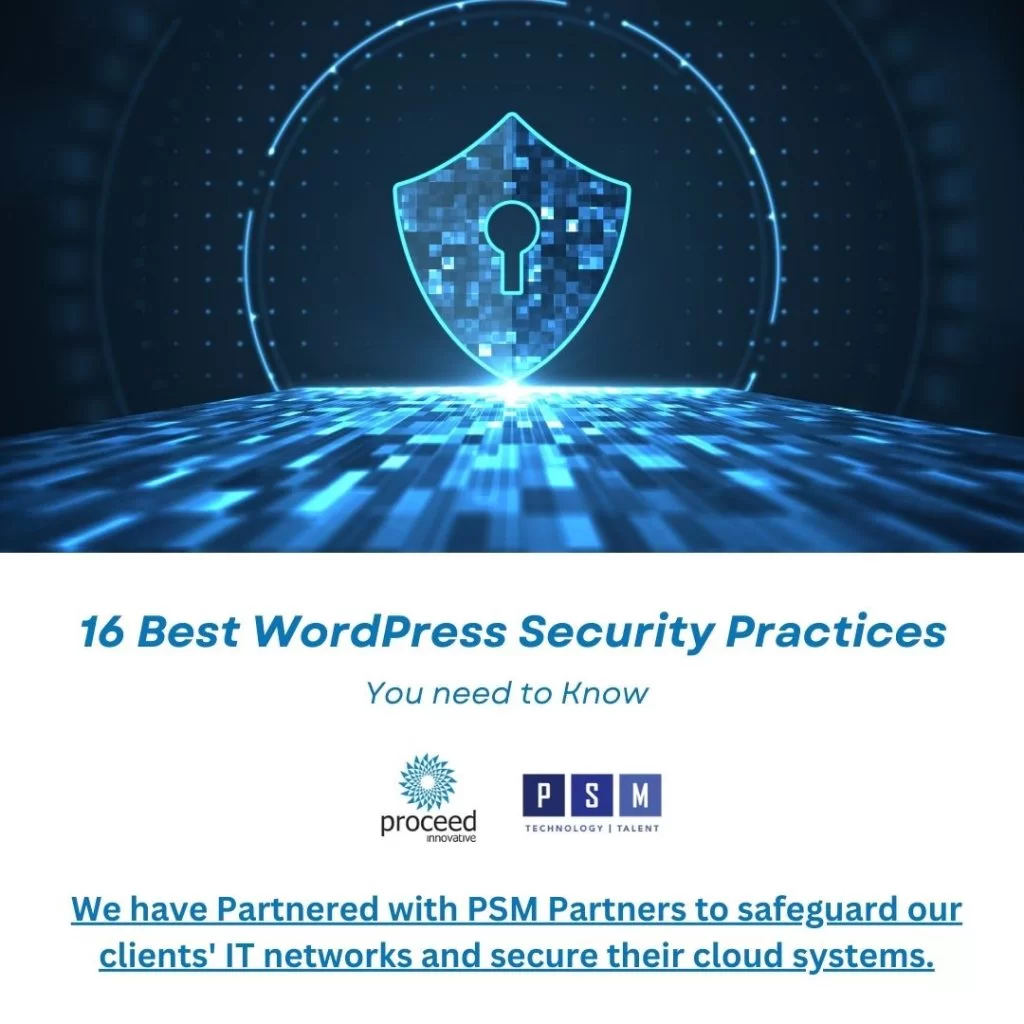Every business needs a website to be successful and grow online. However, many businesses do not have the technical expertise to maintain and update their websites using code. This in part is why WordPress has become the most popular content management system (CMS) used for websites.
While businesses that use WordPress for their websites are often more focused on maintenance and updates, they must also make sure that they are taking steps to keep their websites secure. All websites are at risk of breaches and cyberattacks, and websites managed with WordPress are no exception. In this guide, we discuss some of the best security practices for WordPress websites that can help lower the risk of data breaches and cyberattacks.

What is WordPress?
WordPress is a popular open-source content management system that allows users to create, manage, and publish content on the web. Initially developed as a blogging platform, WordPress has evolved into a versatile CMS used for a wide range of websites, including blogs, e-commerce stores, portfolios, forums, and business websites.
Around 42 percent of all websites use WordPress, making it the most popular CMS. WordPress is free and easy to install, user-friendly, highly customizable, and offers a wide range of themes and plugins from its large community of users. The user-friendly interface allows users to create and manage website content with little technical knowledge. WordPress is also an SEO friendly CMS that makes it easy for users to optimize their websites for better visibility in the search engine results pages (SERPs).
Why are WordPress Websites Attacked?
It is important for businesses to understand that their WordPress websites may be targeted by cyber attackers for several reasons. An attack can also happen at any time which is why businesses should always take the proper security measures, even if they think their website is not a target.

The following are the main reasons WordPress websites get attacked:
- Attackers may use your website to send spam emails.
- They may steal data such as credit card information, mailing lists, personal data, etc.
- They may trick your website into installing malware on the devices and computers of authorized users.
WordPress websites are typically attacked as part of a larger scheme involving several websites in which a server or network is disrupted. It is also likely that WordPress websites are attacked because of the popularity of the CMS. Fortunately, there is a large community of contributors who are always working to help improve the security of WordPress websites. Businesses who use WordPress for their website should also follow best practices to help make their website more secure.
Best Practices for WordPress Security
Implementing the following practices will help you improve the security of your WordPress website:
1. Use the Latest Versions of WordPress, Themes, and Plugins
Making sure that you are using the latest version of WordPress and updating all of your themes and plugins is an easy way to help secure your website. Most of the time, updates are made because developers have found and fixed a vulnerability somewhere in the code. This means that if you do not update WordPress or any of your themes and plugins, then you are leaving your website more vulnerable to attacks.
While you can manually update your themes and plugins, this may be a tedious job, especially for websites that use a lot of plugins. A managed WordPress host can update your themes and plugins automatically and there are also plugins available that check your plugins and themes for updates.
2. Best Practices for Usernames and Passwords
WordPress sets default usernames for the admin account such as “administrator” or “admin” which makes it easier for hackers to get into your website. One method hackers use is trying different combinations of usernames and passwords and if they know your username, then they only have to guess the password.
Once you set your administrator account, WordPress does not let you change the username. However, you can create a new user account within WordPress with a different username and give this account the role of Administrator. Choose a username that is difficult for hackers to guess and delete the original administrator account once you have the new account created.
You should also use strong passwords for all user accounts and change them regularly. A strong password should include a combination of lower-case and upper-case letters, numbers, and special characters. Each user account should also have a different password to make it harder for hackers to get into these accounts. If multiple employees have accounts to access your website, set a reminder for them to change their passwords once or twice each year.
3. Limit Login Attempts
Implementing limited login attempts can help reduce the risk of attacks using brute force (trying different combinations of usernames and passwords). There are plugins available that block someone from logging in after three failed attempts.
4. Change the URL for WordPress Login Page
The default URL to log into WordPress is your website URL with “/wp-admin” added to the end of the URL. Changing the URL of your login screen makes it harder for attackers to find this page. There are several ways you can change the URL, including using plugins. When changing the login URL, make sure to save and share the URL with other authorized users.
5. Implement Two-Factor Authentication
You can further protect your WordPress accounts by implementing two-factor authentication (2FA). Enabling 2FA requires users to take an additional verification step, usually in the form of receiving a one-time code through email, SMS, or an authentication app. This prevents hackers from getting into your WordPress accounts as they do not have access to the cellphones and emails of individual users who receive these codes.

6. Use HTTPS Encryption
HTTPS is a more secure version of HTTP. To convert your WordPress to HTTPS, you need to get a secure sockets layer (SSL) certificate which verifies the authenticity of your website and ensures that the communication between the server and internet browser is encrypted. SSL certificates are free to get, and many WordPress hosts will set up and SSL certificate for your website automatically.
7. Protect Forms with Captcha
All open forms on your website, including newsletter signups, blog comments, contact forms, and checkout pages should be protected with captchas. Hackers can use these forms to submit malicious content to your website. Implementing captchas to protect your open forms reduces this risk.
8. Back Up Your Website
It is wise to regularly do a full backup of your website. This helps save data and other critical information and if your website is hacked, you can restore the most recent backup which limits the amount of data and information lost. Once you have restored the most recent backup, you can then take additional measures to protect your website from similar attacks.
Some web hosts do offer automatic backups as part of their services, but the most secure option is to create and store backups off-site. There are plugins available in WordPress that automatically back up your website and store the backups off-site. These plugins can also be set to back up your website automatically every time a change is made to the site.
9. Scan Your Website for Malware
Even when taking the proper precautions, cyber attackers can sneak malware onto your website. You can regularly scan your website for malware using WordPress plugins or a third-party tool. These tools will thoroughly scan your website’s files, plugins, and themes and alert you of any present malware. Some of these plugins can also provide solutions to resolve the issue quickly and easily.
10. Automatically Log Out Idle Users
It is common for someone to be logged into their WordPress account and either leave their computer while logged in or become pre-occupied with another task without logging out. If someone forgets to log out, someone else can use their computer and get into their account.
WordPress does not have an option to log out idle users, but you can use plugins to do this. With these plugins, you can set the amount of time a user can be active before they are automatically logged out.
11. Delete Unnecessary Plugins and Themes
If you installed a bunch of plugins and themes to customize and manage your WordPress website but only end up using a few of them, you should remove the plugins and themes you do not use. Every theme and plugin is a security risk and the themes and plugins that you are not using are not regularly updated which exposes them to an even higher risk.
It is best to uninstall the themes and plugins you are not using and remove them as potential security risks. It only takes a few minutes to uninstall themes and plugins and you can always reinstall them if you find a use for them in the future.
12. Delete Unnecessary User Accounts
You should only allow authorized users to access your website when necessary and limit each user’s role, so they do not have more permissions than needed. When a user leaves your company or no longer needs access to your website, delete their user account.
Deleting unnecessary user accounts prevents those users from accessing your website and making unapproved changes. This also takes another potential avenue to your website away from hackers. Deleting user accounts in WordPress is easy, but only administrator accounts can do this.
13. Monitor User Activity
If multiple users have access to your website to publish content, make changes, or install plugins and themes, it is a good idea to monitor the activities of all users. This helps administrators notice if a user has their credentials stolen or installs a plugin that is a security risk.
There are plugins available that allow you to monitor the activities done within your WordPress dashboard. These plugins allow you to see what was done when and by which account so you can identify actions that can be detrimental to your website.
14. Install Trusted Security Plugins
There are a number of security plugins available for WordPress that can effectively protect your website from threats. Make sure you do some research to determine which of these plugins are the most trusted among the WordPress community. WordPress security plugins can provide the following:
- Protection against denial of service (DDoS) attacks
- Protection against spam
- Automatic backups
- Malware scanning and cleanup
- Web application firewall (WAF)
There are plugins available that can manage each of these tasks separately as well as plugins that can handle all of these tasks at once.
15. Implement a Web Application Firewall (WAF)
Not only are websites vulnerable to attacks from hackers trying to get into the CMS, but also from spammy or malicious website traffic. Possible cyberattacks from malicious traffic include SQL injections, cross-site scripting (XSS), and cross-site request forgeries (CSRF).
You can block specific types of traffic, including spammy traffic and traffic from malicious IP addresses, by implementing a web application firewall (WAF). Within WAFs, you can set rules to filter specific types of traffic coming to your website. Using a WordPress plugin to implement WAF is advantageous because these plugins were designed to specifically to combat WordPress attacks.

16. Adopt Holistic Approach to Cybersecurity
If your business has a website, chances are that it is a WordPress website as WordPress is the most popular CMS. It is crucial for your business to take the steps mentioned above to protect your WordPress website the best you can against cyberattacks such as data breaches and malware. While taking these steps bolsters the security of your website, you should complement these actions with cybersecurity services from an IT professional.
Contact Proceed Innovative and PSM Partners
 At Proceed Innovative, we provide complete web design services in which we design and create mobile-friendly and SEO-friendly WordPress websites. We can also help manage and update WordPress websites for our clients, but our expertise does not extend to cybersecurity. That is why we have partnered with PSM Partners to help protect our clients’ IT network and ensure their cloud security.
At Proceed Innovative, we provide complete web design services in which we design and create mobile-friendly and SEO-friendly WordPress websites. We can also help manage and update WordPress websites for our clients, but our expertise does not extend to cybersecurity. That is why we have partnered with PSM Partners to help protect our clients’ IT network and ensure their cloud security.
 PSM Partners is an IT firm based in the Chicago, IL area that offers end to end cybersecurity services to help protect servers, websites, and networks from cyberattacks. IT professionals from PSM start by auditing and assessing your IT infrastructure to identify vulnerabilities and implement a multi-layered security solution to bolster the security of your system. They offer security as a service (SECaaS) in which they will monitor, maintain, and update your system, and you can also work with PSM as a cybersecurity consultant.
PSM Partners is an IT firm based in the Chicago, IL area that offers end to end cybersecurity services to help protect servers, websites, and networks from cyberattacks. IT professionals from PSM start by auditing and assessing your IT infrastructure to identify vulnerabilities and implement a multi-layered security solution to bolster the security of your system. They offer security as a service (SECaaS) in which they will monitor, maintain, and update your system, and you can also work with PSM as a cybersecurity consultant.
Curious about your current risk posture? Take PSM’s comprehensive risk assessment quiz to uncover your vulnerabilities.
You can contact Proceed Innovative by calling (800) 933-2402 for more about our web design services and partnership with PSM and contact PSM by calling (312) 940-7830 for more about their cybersecurity services.






